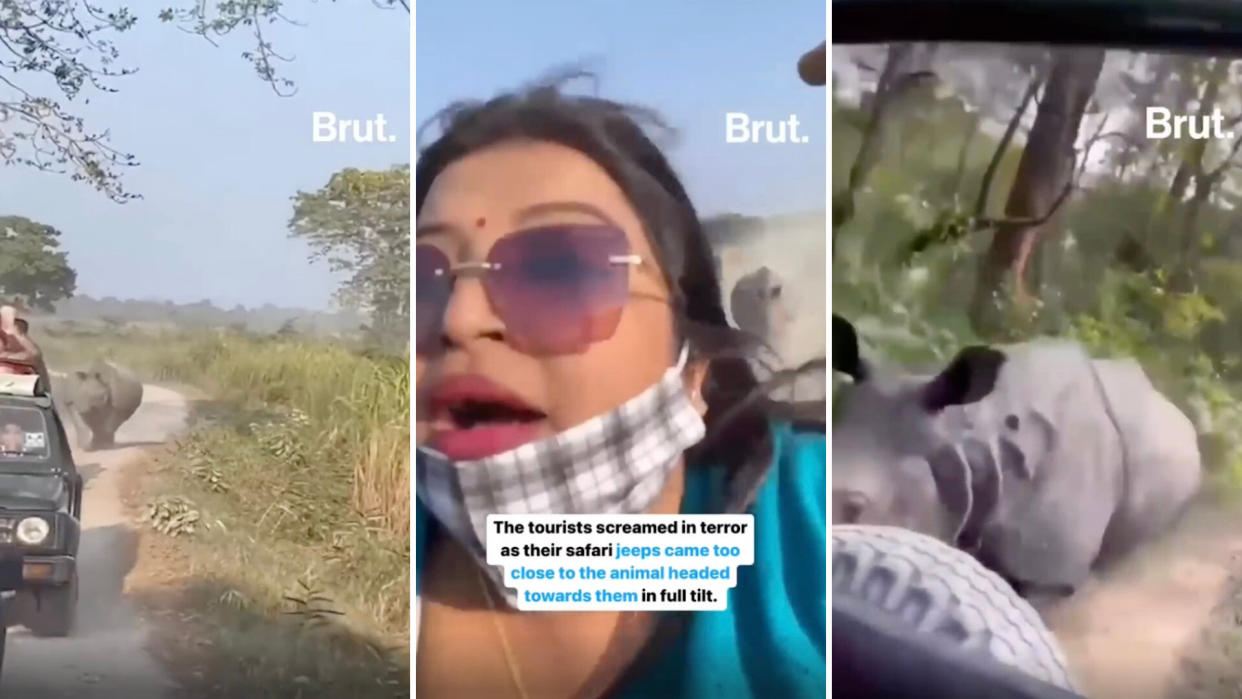Tourists capture dangerously close encounter with rhino at national park: ‘This is terrifying’

One rhino at the Kaziranga National Park in Assam, India, has had just about enough of tourists on their territory.
In video footage pieced together by Brut. and posted on Reddit, visitors traveling through the UNESCO World Heritage site in open-top Jeeps were pursued at speed by the rampaging mammal.
At one point, at least four vehicles were trying to escape the oncoming charge, with passengers screaming in fear as the huge animal approached.
Brut., citing media reports, said the rhino kept up the chase for around 2 miles (3 kilometers) before escaping into the brush.
The comments section on Reddit had little sympathy, with one user quipping, “I thought [the tourists] wanted to see the rhinos?”
Littering is another problem with safari tourism, as the Redditor noted. At a sanctuary in Zimbabwe, for example, where visitors are allowed to get close to various animals, a wildebeest died after ingesting five plastic bags.
The video of the rhino incidents was posted on the r/interestingasf*** subreddit, but one viewer observed that it might not have been uploaded to the correct community.
“This isn’t interesting this is terrifying,” they said.
Brut. observed this isn’t the only recent incident of a rhino running out of patience with people and cars invading their personal space.
One rhino broke out of the bushes and chased a vehicle in the Manas National Park, which is also in Assam. Brut. said that experts believe the rhinos have been charging because they are “agitated” by the continued human presence in the area.
The species featured in these videos is the one-horned rhinoceros, otherwise known as the Indian rhino, and it is the largest of its kind, according to the World Wildlife Fund.
After being hunted for sport or because they were considered agricultural pests, as WWF noted, they were pushed to near-extinction in the 20th century, although conservation efforts have boosted the population to around 4,000 in northeastern India and Nepal.
It is one of the most at-risk species of rhino, although there are far more of this species than the Javan or the Sumatran rhino, which have as many as 76 and 47 left, respectively, in the wild, according to Save The Rhino. In a welcome boost for the latter, one Sumatran rhino was born in November 2023 in Way Kambas National Park in Indonesia.
While the tourists could have suffered some awful consequences following the encounter, it’s unlikely the rhino would have come away much better if it struck the vehicle, highlighting the importance of evaluating how we interact with nature and adjusting if needed.
“Stop using these [Jeeps] which release toxic fumes back into the nature and find an alternative source,” one person suggested.
“If people were continually turning up and walking about my [home] I’d probably chase them away too,” another said.
A rhino chased a group of tourists in Kaziranga National Park, Assam, India. This national park is famous for its one-horned rhinos.
byu/tatv_047 ininterestingasfuck
Join our free newsletter for cool news and cool tips that make it easy to help yourself while helping the planet.

